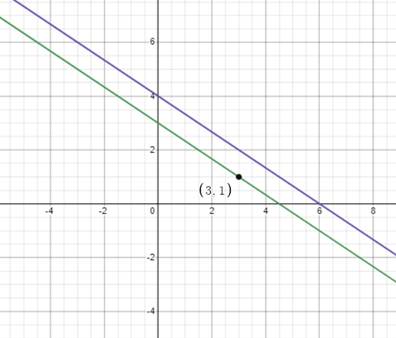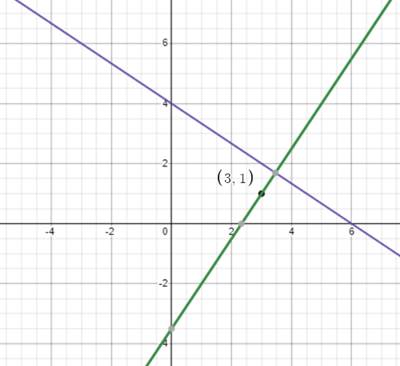
Concept explainers
(a)
To Find:
Find an equation for the line passing through the point and parallel to the given line. Support your work graphically.
Given information:
Point
Line
Concept used:
We can write the equation of a line parallel to a given line if we know a point on the line and an equation of the given line. y=mx+b. Parallel lines have the same slope. The slope of the line with equation y=mx+b is b.
Calculation:
The given Point
Line
So the equation for the line passing through the point
By graphically the graph of

(b)
To Find:
Find an equation for the line passing through the point and perpendicular to the given line. Support your work graphically.
Given information:
Point
Line
Concept used:
We can write the equation of a line perpendicular to a given line if we know a point on the line and an equation of the given line.
Calculation:
The given Point
Line
Here slope m-
So the equation for the line passing through the point and perpendicular to the given line is
By graphically the graph of

Chapter P Solutions
Precalculus: Graphical, Numerical, Algebraic Common Core 10th Edition
 Calculus: Early TranscendentalsCalculusISBN:9781285741550Author:James StewartPublisher:Cengage Learning
Calculus: Early TranscendentalsCalculusISBN:9781285741550Author:James StewartPublisher:Cengage Learning Thomas' Calculus (14th Edition)CalculusISBN:9780134438986Author:Joel R. Hass, Christopher E. Heil, Maurice D. WeirPublisher:PEARSON
Thomas' Calculus (14th Edition)CalculusISBN:9780134438986Author:Joel R. Hass, Christopher E. Heil, Maurice D. WeirPublisher:PEARSON Calculus: Early Transcendentals (3rd Edition)CalculusISBN:9780134763644Author:William L. Briggs, Lyle Cochran, Bernard Gillett, Eric SchulzPublisher:PEARSON
Calculus: Early Transcendentals (3rd Edition)CalculusISBN:9780134763644Author:William L. Briggs, Lyle Cochran, Bernard Gillett, Eric SchulzPublisher:PEARSON Calculus: Early TranscendentalsCalculusISBN:9781319050740Author:Jon Rogawski, Colin Adams, Robert FranzosaPublisher:W. H. Freeman
Calculus: Early TranscendentalsCalculusISBN:9781319050740Author:Jon Rogawski, Colin Adams, Robert FranzosaPublisher:W. H. Freeman
 Calculus: Early Transcendental FunctionsCalculusISBN:9781337552516Author:Ron Larson, Bruce H. EdwardsPublisher:Cengage Learning
Calculus: Early Transcendental FunctionsCalculusISBN:9781337552516Author:Ron Larson, Bruce H. EdwardsPublisher:Cengage Learning





